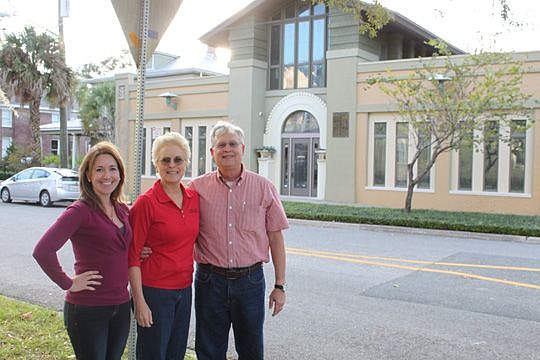
A unique housing stock, easy Downtown access, accessible schools.
High crime rate, general impoverishment, an inordinate number of congregate housing.
Some might think those words were written to describe Springfield today.
They weren’t, though.
That’s how the neighborhood was viewed 30 years ago by a committee of the National American Institute of Architects, a group that provided a play-by-play on how to effectively revitalize the historic neighborhood.
It needed some help from residents and city officials to reach its potential. A lot of help, actually.
Among the many suggestions was to reach agreements through state and local Housing and Urban Development officials to discontinue placing those congregate programs in Springfield.
It took 15 years, but the city approved a special zoning overlay prohibiting more “special uses” like residential treatment facilities, rooming and group care homes and emergency shelters from coming to the area.
That zoning overlay is now the subject of a federal lawsuit filed by Ability Housing of Northeast Florida, which claims the overlay violates the Fair Housing Act and Americans with Disabilities Act.
Disability Rights Florida jumped in the legal fray five days later with a federal lawsuit citing similar concerns.
Jack Meeks and Joanne Tredennick look around their neighborhood.
The husband and wife see problems they say come with a glut of social services concentrated in the neighborhood.
It’s one of the reasons they, and many in the historic neighborhood, have pushed back so angrily against Ability Housing’s plans.
The nonprofit last April announced it wanted to purchase and renovate a 12-unit complex.
The $1.4 million project would provide housing for disabled and homeless veterans, according to the nonprofit’s lawsuit.
Meeks, Tredennick and others fired back. Enough is enough, they said. The overlay was put into place to prevent adding anything else.
“Everyone who lives in this neighborhood has their own story to tell about what’s around them,” said Meeks, who owns an accounting firm in the neighborhood. “No other place has these sorts of facilities.”
Meeks’ story includes several social service facilities a block from his home, he said. An Alcoholics Anonymous meeting house, a halfway house, rooming house and an AA transitional house. Some were grandfathered in.
Others in the area have illegally grown over the years and enforcement efforts haven’t kept up, he said, all of which hurts the neighborhood’s economic viability.
Ability Housing refers to the neighborhood pushback as a NIMBY opposition. The couple and Charlotte Cudd, a resident who works for Meeks, bristle when the “not in my backyard” label is used.
“It’s an insult and it’s a lie,” said Tredennick.
From the types of homes and religions to businesses and people, she defends Springfield as being one of the most diverse neighborhoods in the city.
Meeks is quick to agree and said continued diversity is dependent on not having an overconcentration of special uses in the neighborhood.
“It kills the viability of the neighborhood,” he said. “It’s exactly what we’re trying to overcome not just here, but also Downtown.”
Meeks is vice chair of the Downtown Investment Authority, which oversees urban core development.
Ability Housing pursued the project four times with the city, Meeks said, and each time was denied.
It’s the second time in the past decade there has been a real challenge to the overlay code.
The first was when River Region Human Services sought to acquire the property for treatment programs. The nonprofit ended up not pursuing the plan.
The Ability Housing and Disability Rights Florida lawsuits are the first to be filed.
Meeks said there are good reasons the overlay was put into place. The neighborhood is still fragile, still overloaded with facilities. It’s not the place for more, he said.
Tredennick said if the overlay was invalidated, it would open the door for all overlays in the state to be negated.
She doesn’t think the nonprofit has a valid legal argument and said the city needs to “vigorously defend its position.”
Shannon Nazworth, Ability Housing executive director, said at the time the lawsuit was filed it was unfortunate the situation had come to that point.
Continued city denials meant the nonprofit couldn’t serve veterans and the disabled, she said.
Many within the community are defending their position, too. It was evident in April 2014 when the nonprofit held a town hall with residents to talk about the subject. Many were upset. They still are, Tredennick said.
“It’s time and energy consuming,” she said. “We’d like to put energy into putting the neighborhood forward.”
To reach the potential the national architecture group saw when it penned its report 30 years ago. That group was convinced with residential and city leadership, “something significant could be accomplished here.”
For residents, that’s the hope.
@writerchapman
(904) 356-2466